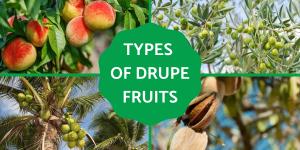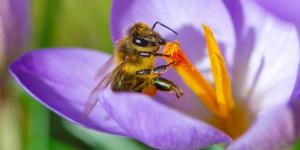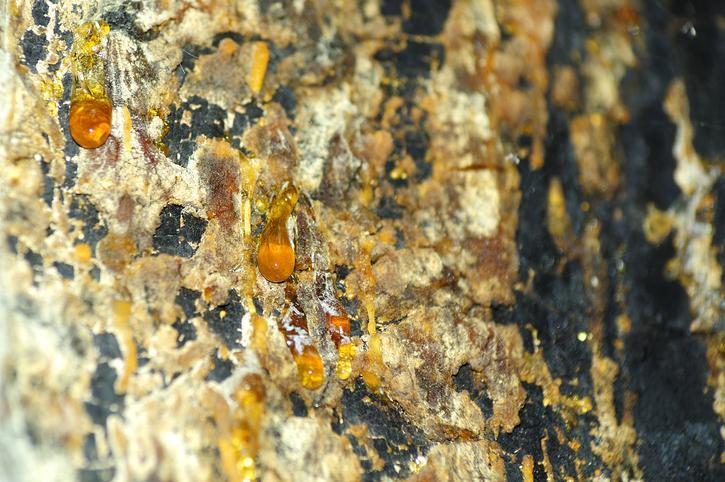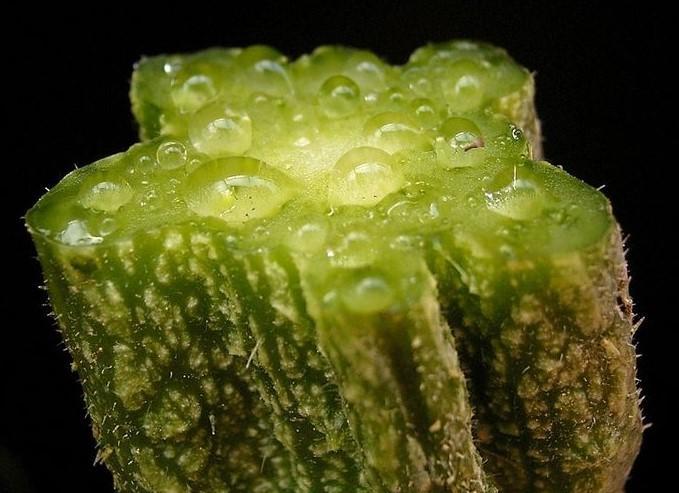What Is Sap in a Tree?


Tree sap is a substance produced by plants which has different functions for the survival of the plant. Although we often associate it with trees, all vascular plants contain sap in some form. It is vital for the growth and development of a plant, but also for its continued functioning. Sap is composed mainly of water, but it also contains nutrients and other substances which are essential for the plant to survive. It is transported by the vascular tissues of the plant, specifically circulating through the xylem and phloem. These different tissues are used for carrying different types of sap, as it is important to note not all are the same.
At thedailyECO, we discover more with our article which asks what is sap in a tree? We look at the function and composition of tree sap, as well as the different types of sap in plants.
What is sap in a tree?
Sap is a liquid substance that is transported through the conductive tissue of plants. Specifically, these conductive tissues are the xylem and phloem, tissues which are present in all vascularized plants. The purpose of this transportation is to deposit important fluids to the various parts of the plant that need it. This includes water, minerals and nutrients which help the plant to function.
The sap found in trees and other plants is found in either its raw or processed form. Whether it is raw or processed will depend on the stage of processing, something we will discuss in the section below.
Tree sap composition
Plants are mainly autotrophs, meaning they are able to create their own food for sustenance. Some plants can be carnivorous and supplement this autotrophic diet with small animals, but they are relatively rare in nature.
The autotrophic behavior of plants is thanks to its sap. The sap of a plant contains a large amount of mineral salts, amino acids and hormones, but it is mainly composed of water. Specifically, around 98% of tree sap is water, with some difference depending on the species. While specific plant species will have variance in composition, so to will the part of the plant.
Generally speaking, tree sap is composed of the following:
- Water: as stated above, the majority of tree sap is made of water. This is absorbed from the environment by the roots, usually from the soil, but this may differ with such plants as types of air plant. Essentially, water is the conduit that allows the other components of tree sap to be transported.
- Minerals: water is not the only material which is absorbed by the roots of plants. Various minerals are also absorbed which include potassium, phosphorous, magnesium and calcium. These minerals are used to fulfil the various plant functions such as reproduction, blooming, etc.
- Sugars: as with animals, plants need energy. This energy is provided by sugars found in tree sap such as glucose, fructose and sucrose.
- Compounds: plant functioning also requires organic compounds such as proteins, hormones and vitamins to be effective.
To improve the growth of plants such as trees, the sap production in the vast majority of species coincides with times of higher temperatures. This is the reason why we often prune in the winter to avoid the loss of tree sap which might cause damage to the plant's organism.

Types of tree sap
As we now know, tree sap is transported through the conductive tissues of plants. These are the xylem and phloem which carry nutrients in different ways. It is the nature of how the components of sap are used and converted that lead to the categorization of different types of sap. They are grouped into two main categories:
- Raw sap: the liquid substance created after the roots absorb water, mineral salts and other important components from their environment. This is transported from the roots to the leaves by the woody xylem which carries liquids up through the tree. This raw sap is nutrient rich and allows the plant to carry out vital functions such as metabolism or reproduction. This raw sap processing occurs thanks to photosynthesis.
- Processed sap: once the nutrients and other material in the raw sap is used for its various purposes, the processed sap is then transported by the phloem. This usually occurs in a downward motion after being metabolized by photosynthesis. The processed sap is the true food of the plant, since it contains not only water and mineral salts, but also sugars and phytoregulators.
Learn more about how trees process sap with our article on how photosynthesis in plants works.
Functions of sap
Now that we have explained the composition of tree sap, we can look at how it is used within the plant to allow it to function and survive. The uses of plant sap include:
- Survival: the main function of sap is to nourish the plant for its correct development and functioning. Without it, the plant will not be able to transport vital nutrients and the plant would die.
- Photosynthesis: the sap is responsible for transporting microelements and macroelements to the leaves so that photosynthesis can take place. Doing so allows the plant to create its own food, which is then transported to all parts of the plant.
- Thermoregulation: thanks to the sap, the plant can improve its own thermal regulation via the process of transpiration through the leaves and stem of the plant.
- Protection: when the outside of a tree has been damaged, sap can be exuded and used to protect the damaged area. It can also provide nutrients useful for repairing damaged tissues. This is similar to how blood coagulates at a wound.
- Human use: after being converted into processed sap, this material not only serves as food for the plant itself, but is also a source of food for other animals and humans. There are some types of sap produced by different species of plants that are used for materials such as waterproof fabrics. Maple syrup is one of the most famous uses of tree sap, specifically from the maple tree.
One of the most commercially exploited types of tree sap is pine resin. Learn about the plants that produce this resin with our article on the different types of pine trees.

How is sap transported in trees?
Trees are tall plants which can grow many feet in height, with the tallest recorded tree being well over 350 foot tall. This means sap needs to be transported across great distances, despite being subject to the force of gravity. While processed sap moving down the phloem uses gravity as an aid, raw sap moving up the xylem has to contend against it.
Various processes allow the transport of sap within the tree. These include the following:
- Transpiration: this is one of the most important methods of sap transportation. When water evaporates off the surface of a plant, the stomata in leaves help to create a negative pressure which sucks the sap up the xylem.
- Size of capillaries: the capillaries of the xylem are very narrow. Being so narrow, they can use the process of capillary action to transport upwards against gravity.
- Tension: similar to transpiration, evaporation on the leaves and surfaces of plants creates negative pressure which allows the sap to travel upwards in the tree.
- Hydrogen bonding: cohesion of the water molecules allows them to stick together and adhesion makes them stick to the vessels, thanks to the elements within it. This cohesion and adhesion allows for transportation in the xylem.
Now we know about the composition and uses of tree sap, we should know that not all plants have a xylem and phloem for nutrient transportation. Learn more about transport in non-vascular plants with our article on what are thallophytes?
If you want to read similar articles to What Is Sap in a Tree?, we recommend you visit our Biology category.







